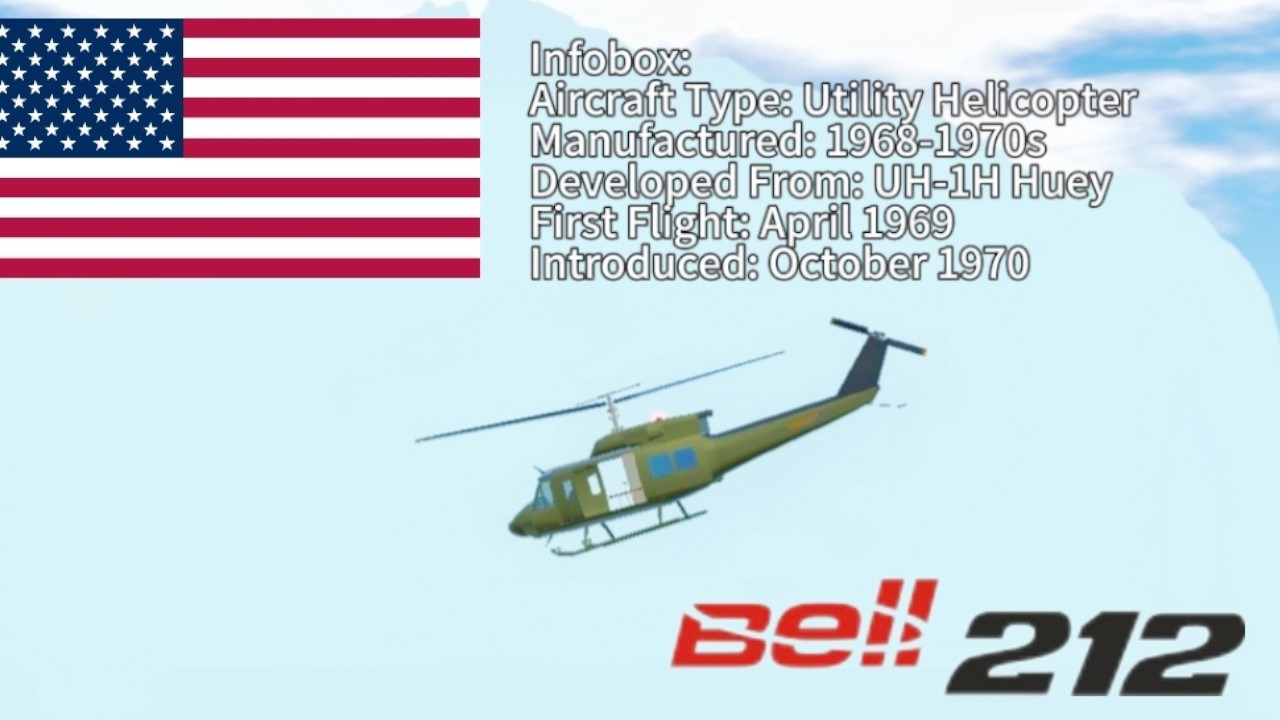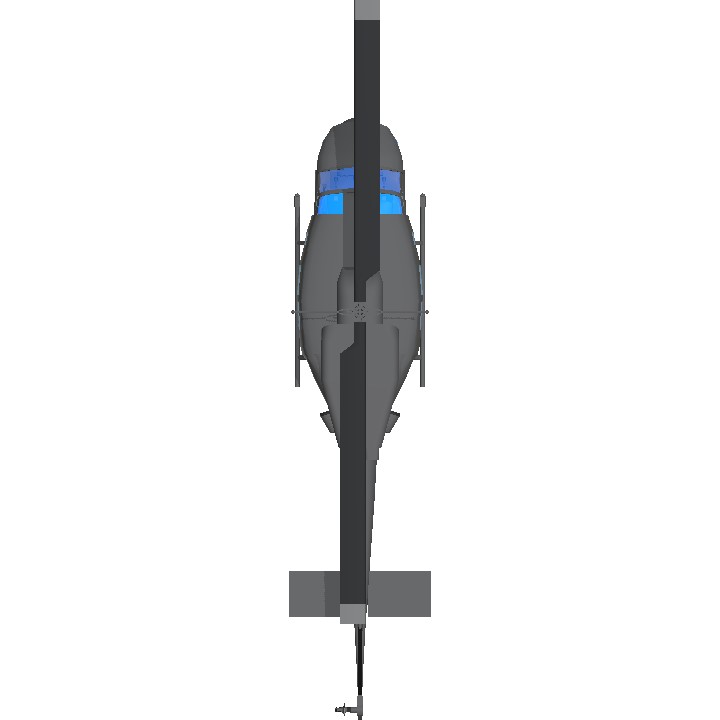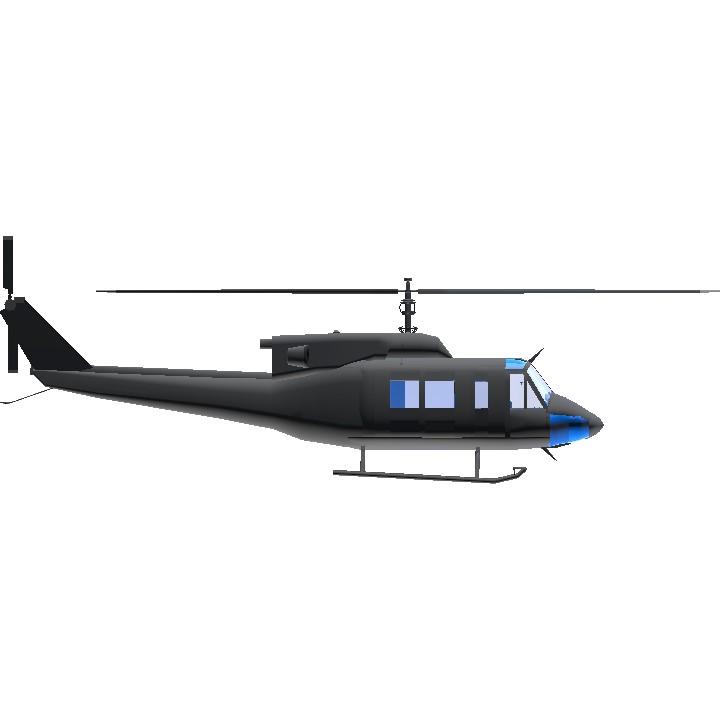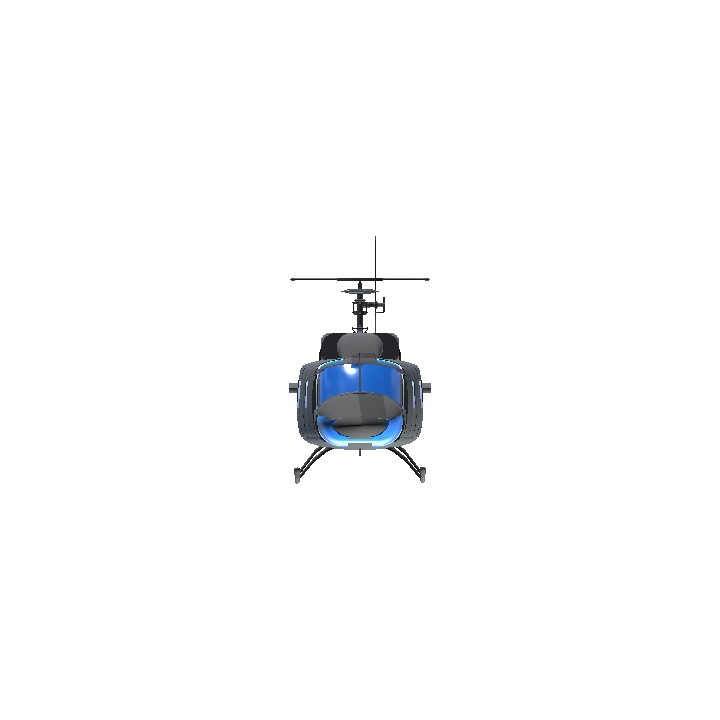Start of the Description.
About UH-1N Twin Huey/Bell 212
Source: Wikipedia (UH-1N)
Barely a year following initial discussions, the UH-1N performed its maiden flight in April 1969. Its procurement by the US military was initially controversial due to the high level of Canadian content, such as its Pratt & Whitney Canada PT6T turboshaft engines. However, the acquisition was approved and the Twin Huey was quickly delivered to the United States Air Force and being sent to front line combat units in Vietnam in October 1970. The following year, the Canadian Forces, United States Marine Corps, and the United States Navy all received their first examples; Bell was also quick to adapt the Twin Huey into a civilian helicopter, the Bell 212, as well as the later Bell 412.
The Twin Huey would see service in numerous conflicts, the first being the Vietnam War, where they were commonly used to support Special Forces reconnaissance missions. On the home front, they were used as the main utility helicopter at various ICBM launch sites, as well as operating as executive transports for carrying the US president and other high-ranking officials by Marine Helicopter Squadron One.
Activations
AG3: Hover Mode
AG6-7: Left-Right Door
Landing Gear: Trooper Doors
Controls:
VTOL = Throttle
Throttle = Collective Pitch (which gains you lift)
What's Different?
Elongated engine compartment/fairing & more accurate inlet placement.
End of the Description.
Specifications
Spotlights
- This craft is curated
General Characteristics
- Predecessor Gator 2
- Created On Android
- Wingspan 10.1ft (3.1m)
- Length 51.1ft (15.6m)
- Height 17.6ft (5.4m)
- Empty Weight 11,679lbs (5,297kg)
- Loaded Weight 13,706lbs (6,217kg)
Performance
- Power/Weight Ratio 49194.324
- Wing Loading 193.1lbs/ft2 (942.9kg/m2)
- Wing Area 71.0ft2 (6.6m2)
- Drag Points 7206
Parts
- Number of Parts 294
- Control Surfaces 0
- Performance Cost 1,242




